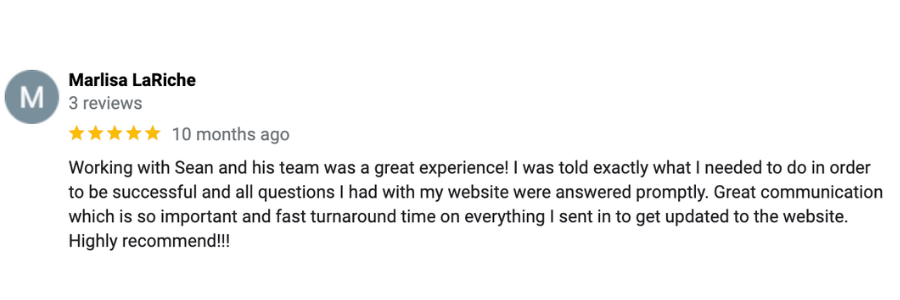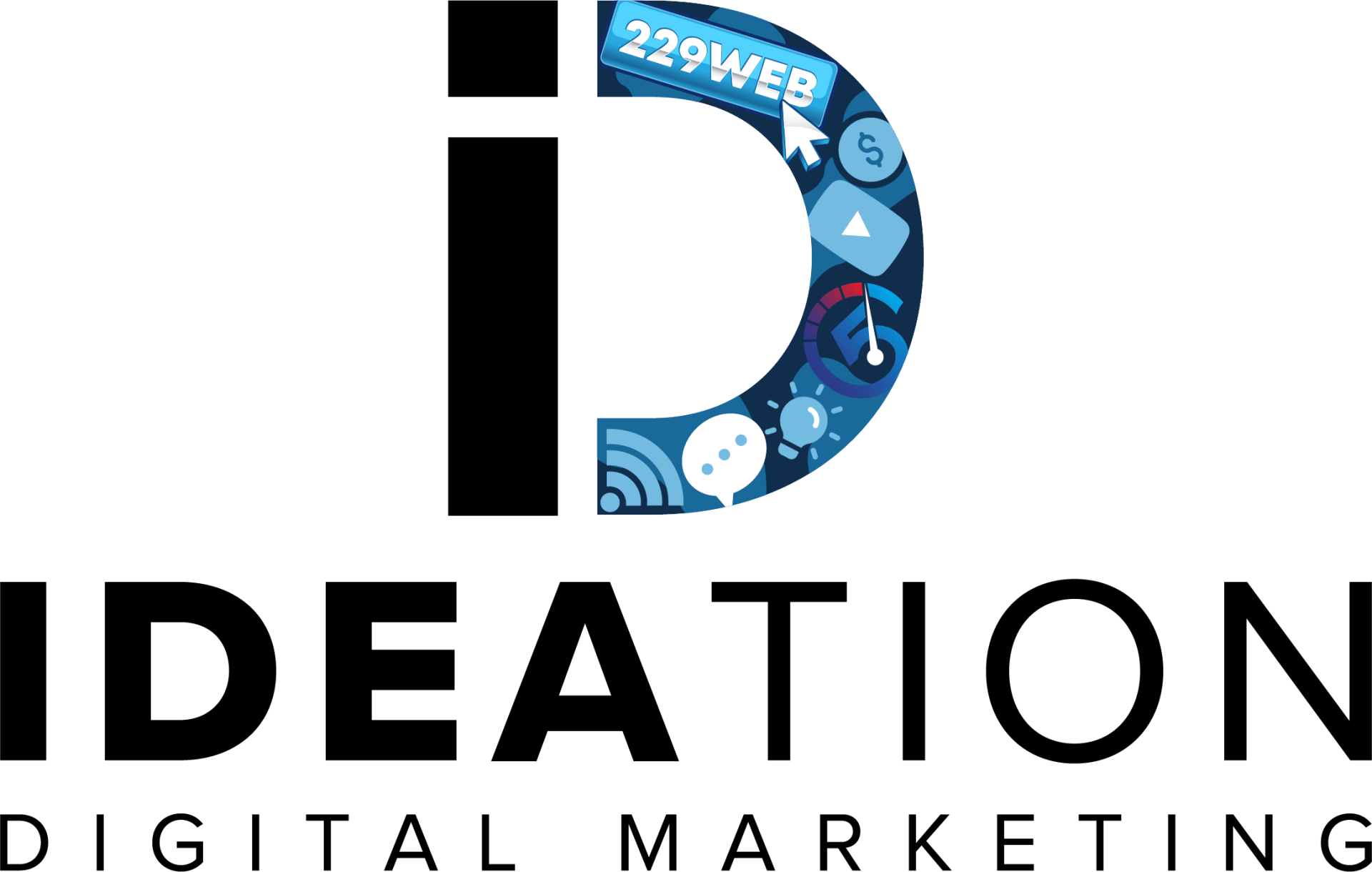Ideation Digital specializes in strategic marketing services that drive results for your business or organization, let us show you how our SEO Services can help grow your business on auto-pilot.
Is your online presence strong but your sales numbers remain disappointingly low?
Do you feel invisible online and know it’s affecting your sales growth?
Wondering if your business website actually brings in any customers?
Invested in online marketing but not seeing any increase in sales or customer inquiries?
The problem is there is more competition than ever for attention online and having a "good enough" online presence isn't good enough to get you customers anymore.
At Ideation Digital marketing we focus on building websites and SEO marketing programs that get you customers and leads, because why else would you invest in your small business marketing?
We understand the business saving impact of knowing you are getting consistent online leads from your website and online marketing. We are small business owners too.
That's why we only create online marketing that is optimized to produce sales and results. A.I. powered organic and comprehensive marketing systems that leverage the power of A.I. to create an online presence that actually makes the phone ring.

Want to discover how much not having an A.I. powered organic marketing system is costing your business already?
Get our digital marketing cheat sheet, made from a decade of experience in the industry, and customized for your business with exact steps to get consistent leads from your online marketing and finally feel like your online marketing investment is worth it!
How It Works
1. Analyze and Create a Strategy
We audit your existing marketing and needs, and help you figure out where your best opportunities are and agree on a plan that fits your goals.
2. Fast Implementation
Based on your strategy, we create your website and other marketing assets within a week so that you get leads FAST, and we offer unlimited editing so that your online presence always looks its best.
3. You Get Leads
Our expert team implements effective online marketing strategies to bring in leads and improve your local visibility, putting you in front of the right people at the right time so they actually reach out.
4. We Make Sure You Keep Getting Leads
We continue to monitor and actively manage your website, SEO, and digital marketing campaigns, allowing you to focus on your business while it shines online.
Here's what you get working with us:
Trust
We only recommend products and services that align opportunities with your goals. We focus on results for your business first.
Freedom
We manage all campaigns and assets for you. Need an update? No problem, send us an email, a text, or we will even create you a slack channel.
Growth
We don't just build websites, create SEO plans, and run ads for online marketing campaigns, we create comprehensive a.i. powered organic and paid marketing programs that bring you leads and customers.
See What Small Business Owners are Saying About Working with Ideation Digital








Email Marketing Campaign Management: How To Succeed With Email
In a digital era where social platforms are constantly changing, one channel remains a steady powerhouse in the marketing world: Email. Introducing our deep dive into succeeding with email marketing campaigns. Despite the proliferation of seemingly endless new online communication methods, 81% of businesses still identify email as their go-to customer acquisition and retention method. Navigate the sea of email marketing campaign strategies successfully, pivot quicker than your competition, and unlock previously unseen benefits from your existing list - read on to amplify your business growth through the power of an effective email marketing campaign. Experience the exponential increases in conversions, engagement rates, and customer loyalty that only strategically planned and expertly executed emails can deliver!

Managing email marketing campaigns involves careful planning, goal setting, and timely execution. Our comprehensive article on Email Marketing: Campaign Management provides expert insights and strategies for brainstorming, crafting effective subject lines and messages, utilizing automation, personalization techniques, list segmentation, auditing lists, optimizing CTAs, tracking metrics, and more. By following these best practices, you can enhance the success and ROI of your email marketing campaigns.
Establishing Campaign Objectives and Goals
Establishing clear objectives and goals for your email marketing campaign is a crucial first step if you're hoping to achieve success. It's essential to identify what type of action you wish your recipients to take, as well as the tone and style of messaging that resonates best with your audience. Once you've identified clear objectives and goals, it will be much easier to craft a cohesive email marketing strategy that drives engagement and converts leads into customers.
- Establishing clear objectives and goals is crucial for a successful email marketing campaign. Identify the desired action, tone, and style of messaging for your audience. With clear objectives and goals, crafting a cohesive strategy becomes easier and helps drive engagement and convert leads into customers.
Determining the purpose of your email campaign is also critically important. Are you hoping to promote a new product or service, build brand awareness, convert new leads, or retain current clients? Depending on the goal of your campaign, different strategies may make more sense. For example, if you are trying to promote a newly launched product or service, it might be helpful to include a time-sensitive discount code in your emails. Alternatively, if you want to build better relationships with existing customers and retain them over time, providing valuable educational content through targeted campaigns could be highly effective.
Suppose the goal of your latest email marketing campaign was aimed at converting leads into customers by offering an exclusive eBook for subscribers. The objectives could include increasing open rates by 10%, boosting click-throughs on the article link by 20%, and continually nurturing leads until they are ready to move ahead with a purchase.
Purpose Setting for Your Campaign
Blueprint for Effective Campaign Design
Email marketing is still essential for building and maintaining a relationship between businesses and customers. It's a valuable tool for lead generation, creating customer loyalty, and gaining repeat business, among other things. However, designing an email marketing campaign that meets your goals requires careful consideration of various factors.
Audience Segmentation: Identify your audience's different needs and categorize them based on demographics such as age or interests.
Strategy: Map out what you aim to achieve with the email campaigns - lead generation, sales conversion, awareness, or retention.
Content: Determine the type of content (video, images, or text) and information to be included based on your goal and segmentation.
Frequency: Choose how often you will send emails while considering industry standards like weekly newsletters or promotional events.
Design: Ensure that your email design reflects your company's brand identity while being aesthetically pleasing to encourage engagement.
With these considerations in mind, here are some strategies for effective message development and design.
Message Development
and Design
Think of an effective email message as a conversation between you and the reader. You want to create interest from start to finish without losing their attention along the way.
Crafting a compelling subject line is crucial because it's the first thing readers see before opening an email. Incorporate personalization and incentive-based language to increase open rates. The body copy should immediately relate to the reader by addressing their pain points, offering solutions and providing valuable information.
Also, keep in mind that most people access their emails on mobile devices. Therefore it’s best to optimize your design for mobile usage by keeping things simple and legible. Make sure the layout is visually appealing with good use of colors that highlight important information.
Success with email marketing demands expertise in execution strategies beyond message development including automation implementation and proper list management. These aspects are crucial and will be covered in Part II of this series.
Execution of Email Campaigns
Email campaigns can be incredibly effective if executed correctly. However, without proper planning and execution, they can fall short of expectations, leading to a waste of time, money, and resources. To ensure the success of an email marketing campaign, it's crucial to focus on three main elements: audience targeting, content delivery, and analysis.
Think of these three elements like puzzle pieces; each one is vital in creating a complete picture and success for your campaign.
Firstly, audience targeting requires segmenting your subscriber list for personalization purposes. This way, only engaging, relevant content reaches the right people instead of spamming every recipient with generic emails.
Secondly, content delivery that's optimized for devices and email clients is essential for ensuring that your message doesn't land in the spam folder. With email clients continuously updating their spam filter algorithms to weed out low-quality messages, following best practices like maintaining consistency between subject lines and email copy can go a long way.
Finally, analysis serves as a vital step in understanding what works for your subscribers. By tracking open rates or click-through rates (CTR), you can optimize future campaigns based on real-time results.
With these elements combined, you have a robust email campaign strategy that helps you reach subscribers more effectively.
Performance Evaluation and Best Practices
Email is still one of the most effective marketing channels in terms of return on investment, but that doesn't mean every email campaign is a success. However, evaluating your performance over time and following best practices can help guarantee victory.
Start by choosing appropriate metrics and goals for your email campaigns with the customer journey in mind. Some common key performance indicators include:
01
Deliverability rate: shows the percentage of sent emails successfully delivered to recipients. Aim for 99% deliverability rate.
02
Open rate: percentage of recipients who opened the email. A good open rate ranges from 20% to 22%.
03
Click-to-open rate (CTOR): percentage of people who clicked on a link inside the email after opening. Aim for 10.5% CTOR to measure overall campaign success.
04
Conversion rate: percentage of subscribers who performed a specific action, like making a purchase. Conversion rates in ecommerce above 2% are considered good.
05
Unsubscribe rate: percentage of users who opted out of the subscriber list after receiving an email campaign. Aim for 0.5% or less.
06
Bounce rate: measures the number of emails sent that couldn't be delivered. A good bounce rate is 2% or less.
07
List growth rate: refers to the rate at which your email list is growing. Aim for a list growth rate of 2.5%.
Now that you have identified targets, what's next?
Tracking, Reporting, and Learning From Data
Tracking email marketing metrics helps understand how subscribers engage with content and improve future emails.
For instance, if you have noted lower open rates continuously over several months, this could indicate issues related to subject lines or poor targeting accuracy.
After tracking data over time, segment the audience based on their response behaviors and preferences; tailor messaging accordingly to boost engagement rates. At this point, focus on specific metrics with clear actionable insights that can positively influence future campaigns.
Imagine you're a farmer continually checking soil pH and nutrient levels to ensure better growth for the next harvest.
Furthermore, use A/B testing to compare how different approaches affect results. For example, test varying email layouts, subject lines or call-to-actions before sending out a campaign. Always follow email marketing best practices to avoid spam filters or getting relegated to the promotions folder.
Although collecting data and evaluating your email campaigns might seem daunting at first, regular tracking and analyzing can save you time and money while improving response rates in the long run.





